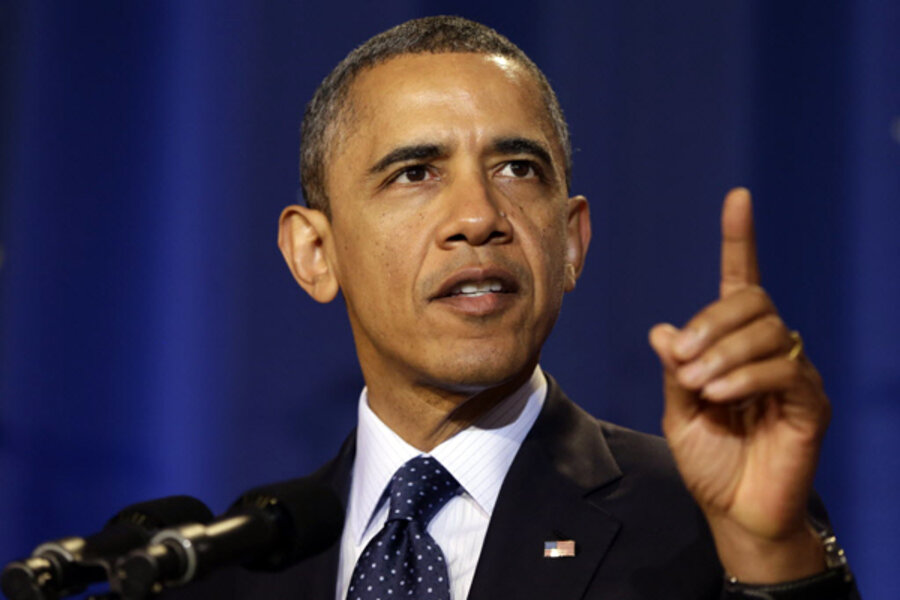Obama tax plan: Which cities would it hit hardest?
Loading...
| New York
If President Obama gets his way in his desire to raise taxes on the wealthiest, the East and West Coasts will be hit the hardest.
That’s where the richest Americans are clustered. They are in places such as the New York metro area, Silicon Valley, and Boston.
Sorry Dayton, Ohio, (No. 84) and Little Rock, Ark., (No. 64) but you’re not close. Yes, there are some individual ZIP Codes in the Midwest, especially around Chicago, that have high income levels, but the wealth does not extend to the greater metro areas around those rich neighborhoods.
Under the Obama plan – which House Republicans rejected in their own proposal Monday – taxes would rise on people making more than $250,000 a year by returning the top tax rate back to the pre-Bush level of 39.6 percent. This would affect about 3.5 million filers – or the top 2.1 percent, according to the Tax Policy Center, a joint venture of the Brookings Institution and the Urban Institute. For these filers, the average tax increase would be about $34,000, estimates the TPC.
America's wealthiest areas have large concentrations of professionals such as lawyers, government workers, or doctors. It helps to have a university around but it’s not necessary for a metro area to sparkle. Possibly more important is a good commuter transportation system or an area that has a top educational rating. And, for the most part, the rich live in blue states, although the city or town they live in may not have voted with the rest of the state.
“One of the most important elements in wealthy metro areas is high education levels,” says Elizabeth Kneebone, a fellow at the Brookings Institution Metropolitan Policy Program. “A high share of the residents tend to have a bachelor's degree or higher.”
What communities are likely to feel the effects of the higher taxes the most?
1. Silicon Valley
The nation’s richest metro area, measured by percentage of filers who report more than $100,000 of income, is the San Jose, Calif., metro area. Some 25.5 percent of the 763,916 tax filers crossed the $100,000 threshold in 2010. “Silicon Valley has a high concentration of high skilled employment and human capital,” says Ms. Kneebone.
2. Washington
The nation’s second richest area is the nation’s capital and its suburbs. The Washington metro area – including northern Virginia and southern Maryland – is filled with lawyers, lobbyists and men and women with advanced degrees. According to Brookings, 24 percent of households reported income of at least $100,000.
In terms of raw numbers, the Washington area's 600,945 rich households comes second only to the New York Metro area, though New York – despite its nearly 1.4 million households making more than $100,000 – comes in 14th by percentage of filers.
3. Connecticut suburbs
The nation’s third wealthiest area is the Connecticut cities of Bridgeport, Stamford, and Norwalk. Included in this metro area is Greenwich, the hedge fund capital of the US. Many of the residents commute to Wall Street, where they earn a healthy income working for the investment banking business or supplying the legal and accounting backup for the dealmakers. Some 23.8 percent of the filers earned at least $100,000, according to Brookings.
4. San Francisco
The greater San Francisco area, including Oakland, Calif., is the fourth richest metro area, with many professionals working for high-tech software development companies or providing legal, public relations, or advertising services. Brookings found some 21.7 percent had incomes equal to or over $100,000.
5. Boston
The Boston area is full of highly educated people who work in the defense industry, biotechnology, and other science-oriented fields. That helps make Boston the fifth richest area with 19.4 percent of its 2 million tax filers earning at least $100,000.
Other top 10 wealthy areas that would feel the bite of higher taxes include Poughkeepsie, N.Y.; Baltimore, Md.; Hartford, Conn.; Seattle; and the Los Angeles suburbs of Oxnard, Thousand Oaks, and Ventura.







